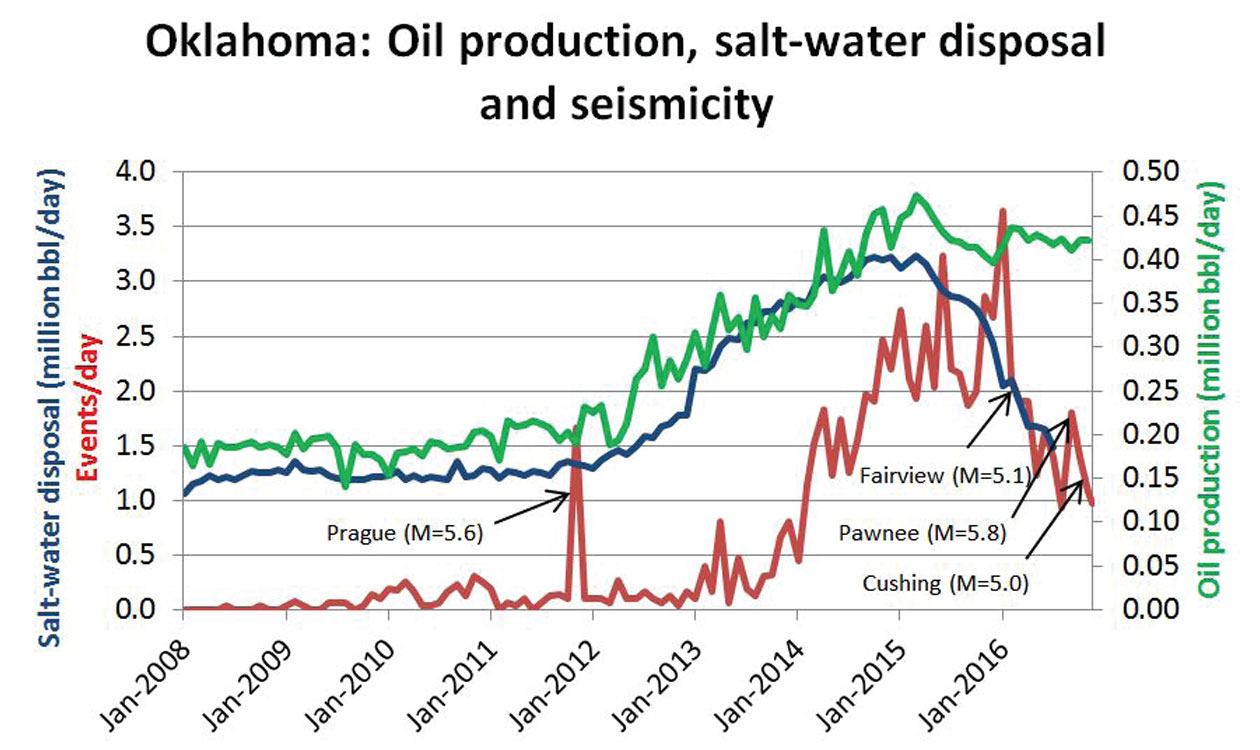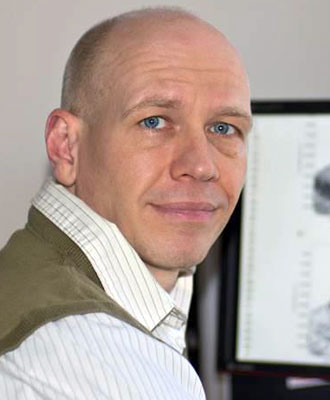Abstract
There has been significant public and scientific interest in the observation of changed seismicity rates in North America since 2008, possibly due to human activities. We find that the seismicity rate in Oklahoma between 2008 and 2016 is strongly correlated to increased hydrocarbon production. The possibility of systematic correlations between increased hydrocarbon production and seismicity rates is a pertinent question since the United States became the world's largest hydrocarbon producer in 2013, surpassing both Saudi Arabia’s oil production and Russia’s dry gas production. In most areas, increased production is due to systematic hydraulic fracturing which involves high-pressure, underground fluid injection. Increased hydrocarbon production also leads to increased salt-water production which is often disposed of underground. Increased underground fluid injection in general may cause increased seismicity rates due to facilitated slip on pre-existing faults.

Contrary to Oklahoma, analysis of oil and gas production versus seismicity rates in six other states in the United States and three provinces in Canada finds no state- or province-wide correlation between increased seismicity and hydrocarbon production, despite 8- to 16-fold increases in production in some states. However, in various areas, seismicity rates have increased locally. A comparison with seismic hazard maps shows that human-induced seismicity is less likely in areas that have historically felt fewer earthquakes. The opposite is not necessarily true.
Biography
Mirko van der Baan is a professor at the University of Alberta in the Department of Physics, specializing in exploration seismology. He graduated in 1996 from the University of Utrecht in the Netherlands, obtained a PhD with honors in 1999 from the Joseph Fourier University in Grenoble, France, and then joined the University of Leeds, UK, where he became the reader of exploration seismology. He also holds an HDR (Habilitation) from University Denis Diderot, Paris, France.
Mirko is currently the director of the Microseismic Industry Consortium, a collaborative venture with the University of Calgary, dedicated to research in microseismicity. He also is one of the founding members of the Integrated Petroleum Geosciences (IPG) professional MSc program at the University of Alberta.






